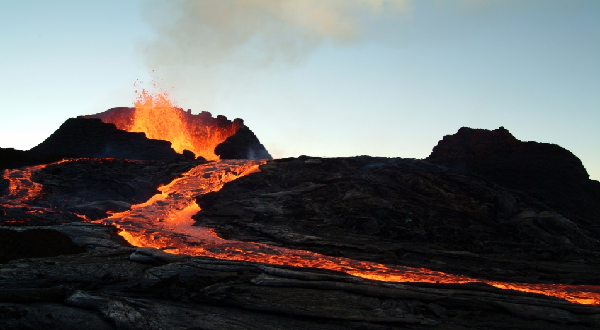Narrow Jets in Volcanoes Don't Cause Eruptions, Say Researchers
| Paula Marie Navarra | | Sep 09, 2014 10:14 AM EDT |
A new study from the University of Miami shows narrow jets in volcanoes widely believed to be the main cause of eruptions don't exist.
The prevailing belief is that volcanoes erupt when magma gushes out as narrow jets from deep inside the Earth.
Don Anderson, one of the researchers, said seismology data they collected showed that narrow jets, also called mantle plumes, aren't supported by basic physics.
Like Us on Facebook
Anderson said mantle plumes have never been a logical basis for volcanic eruptions. He likened the belief n mantle plumes similar to Rudyard Kipling's theory on how giraffes got their long necks.
He said that in the current mantle plume theory, heat from the Earth's core can generate narrow jets of hot magma that gush through the mantle up to the surface.
The jets act as pipes that transfer heat from the core, he added.
To debunk this belief, researchers analyzed global seismic activities such as big quakes and tiny tremors.
Researchers were unable to detect the narrow plumes despite the broad features beneath the surface interpreted as plumes and super plumes.
With the help of seismic stations, they confirm there are no narrow mantle plumes. On the other hand, what researchers found was a large, slow and upward-moving chunk of mantle a thousand kilometers wide.
Anderson said that volcano formation results from plate tectonics, which is an age old theory on how the Earth's plates move and behave.
He added that magma rises until it reaches the bottom of the plates and fissures. Magma then causes stresses, cracks and other tectonic forces that squeezes the magma, which erupts in a volcano.
Anderson said this theory called "top-down tectonics" is a demonstration of normal broadscale convection and plate tectonics.
This theory demonstrates the Earth's interior processes are caused by cooling of the planet's surface and not by the core's heat.
©2015 Chinatopix All rights reserved. Do not reproduce without permission
EDITOR'S PICKS
-

Did the Trump administration just announce plans for a trade war with ‘hostile’ China and Russia?
-

US Senate passes Taiwan travel bill slammed by China
-

As Yan Sihong’s family grieves, here are other Chinese students who went missing abroad. Some have never been found
-

Beijing blasts Western critics who ‘smear China’ with the term sharp power
-

China Envoy Seeks to Defuse Tensions With U.S. as a Trade War Brews
-

Singapore's Deputy PM Provides Bitcoin Vote of Confidence Amid China's Blanket Bans
-

China warns investors over risks in overseas virtual currency trading
-

Chinese government most trustworthy: survey
-

Kashima Antlers On Course For Back-To-Back Titles
MOST POPULAR
LATEST NEWS
Zhou Yongkang: China's Former Security Chief Sentenced to Life in Prison

China's former Chief of the Ministry of Public Security, Zhou Yongkang, has been given a life sentence after he was found guilty of abusing his office, bribery and deliberately ... Full Article
TRENDING STORY

China Pork Prices Expected to Stabilize As The Supplies Recover

Elephone P9000 Smartphone is now on Sale on Amazon India

There's a Big Chance Cliffhangers Won't Still Be Resolved When Grey's Anatomy Season 13 Returns

Supreme Court Ruled on Samsung vs Apple Dispute for Patent Infringement

Microsoft Surface Pro 5 Rumors and Release Date: What is the Latest?










